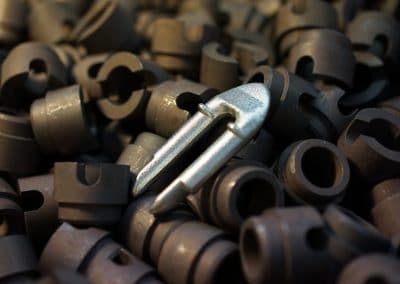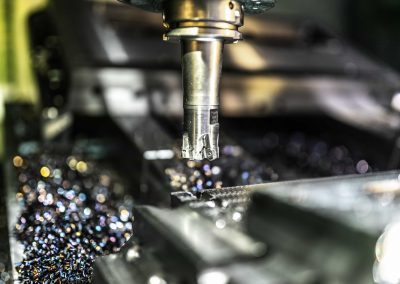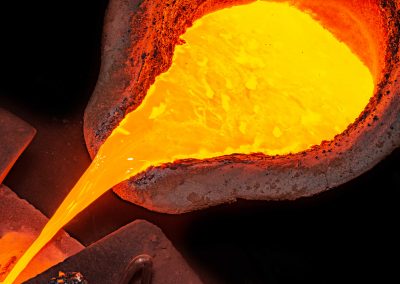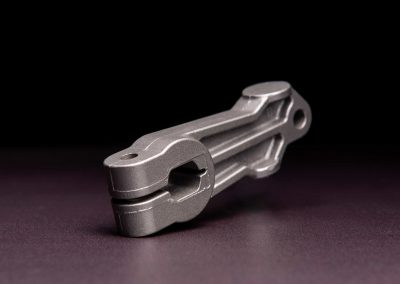Permanent mold casting
Die casting is a process with permanent molds. With this process castings with high dimensional accuracy, complex internal geometries and good surface quality can be manufactured. Die casting is ideal for medium-sized batches.
The molds are usually made of steel or iron. Besides making the complete mold in steel (full mold), it is also possible to make only one half of the mold in steel and the other half in sand. This is called half-die.
However, such a half-die is rarely used.
More frequently a mixed die is used, which consist of metal dies and fitted with cores made of sand.
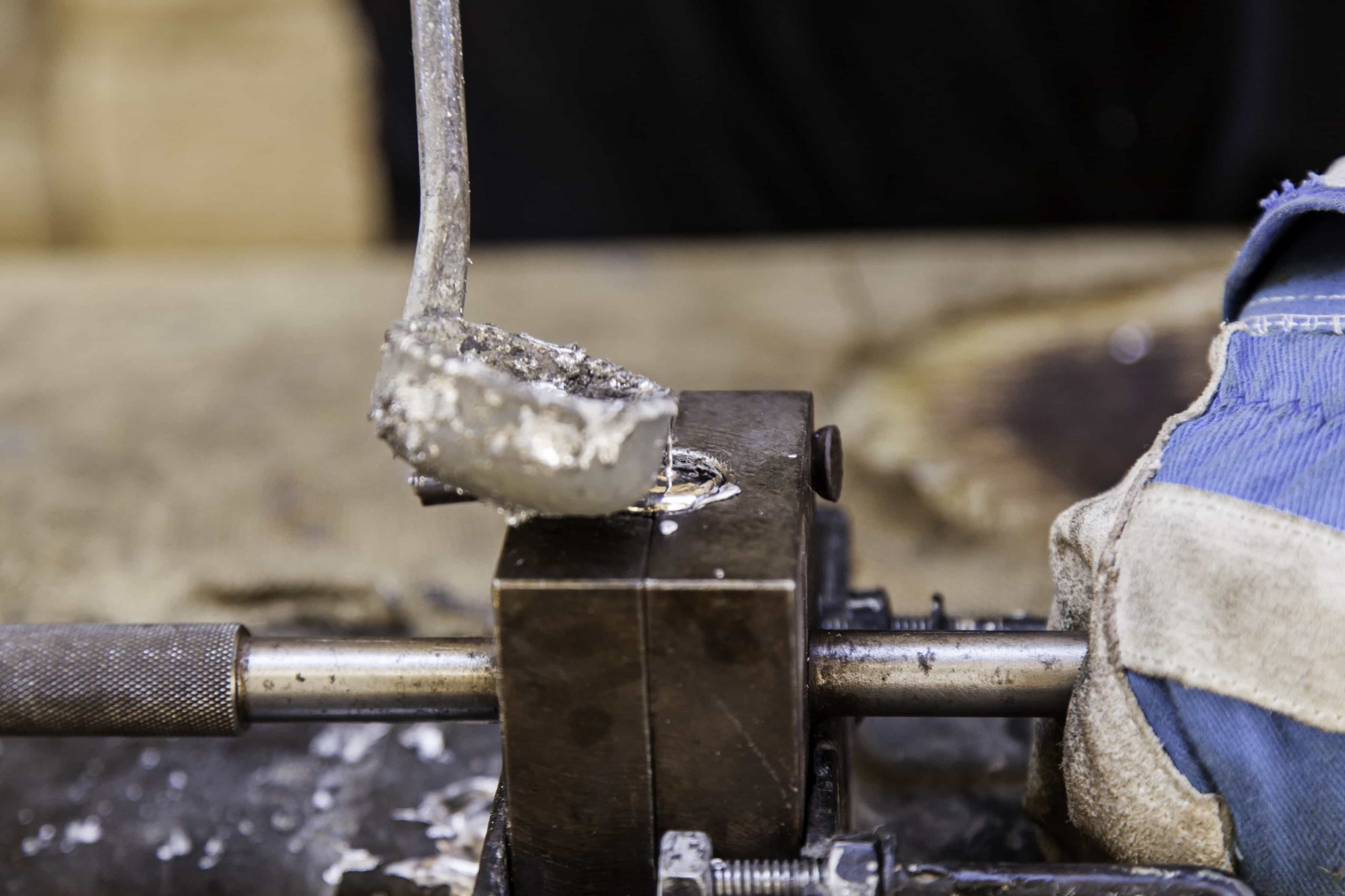
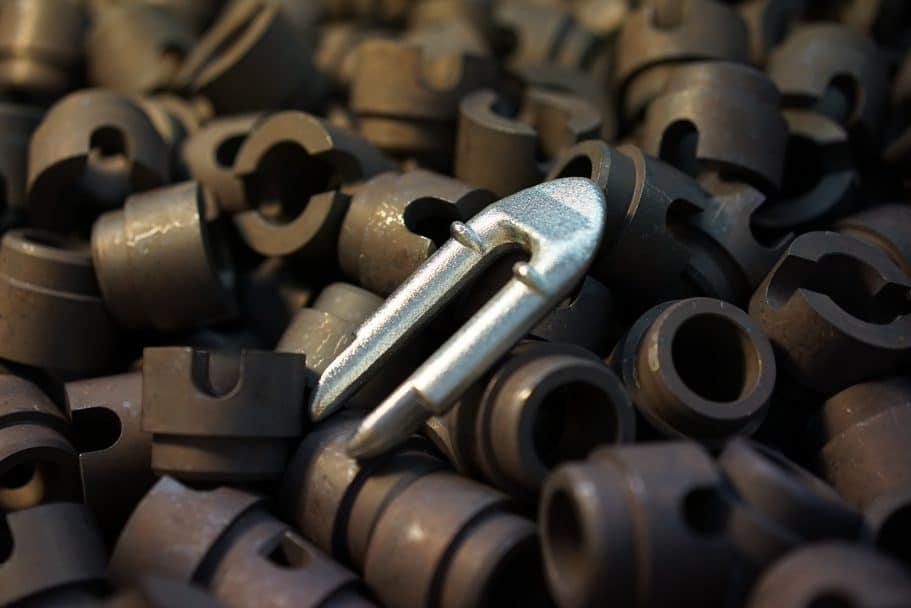
Before the first casting, the die is preheated. Further heating is normally not required afterwards, since the heat exchange that takes place during each casting process continues to keep the die at temperature.
To prevent the casting from sticking to the die, the inner contour of the cavities are coated with a sizing agent. This sizing agent bears up several casting cycles before it has to be renewed again.
As soon as the casting material is solid, the die is opened and the casting can be removed.
Primarily for die-casting aluminum- and magnesium alloys are used.
Moreover, heavy metals, especially brass, and sometime iron materials are casted in dies.

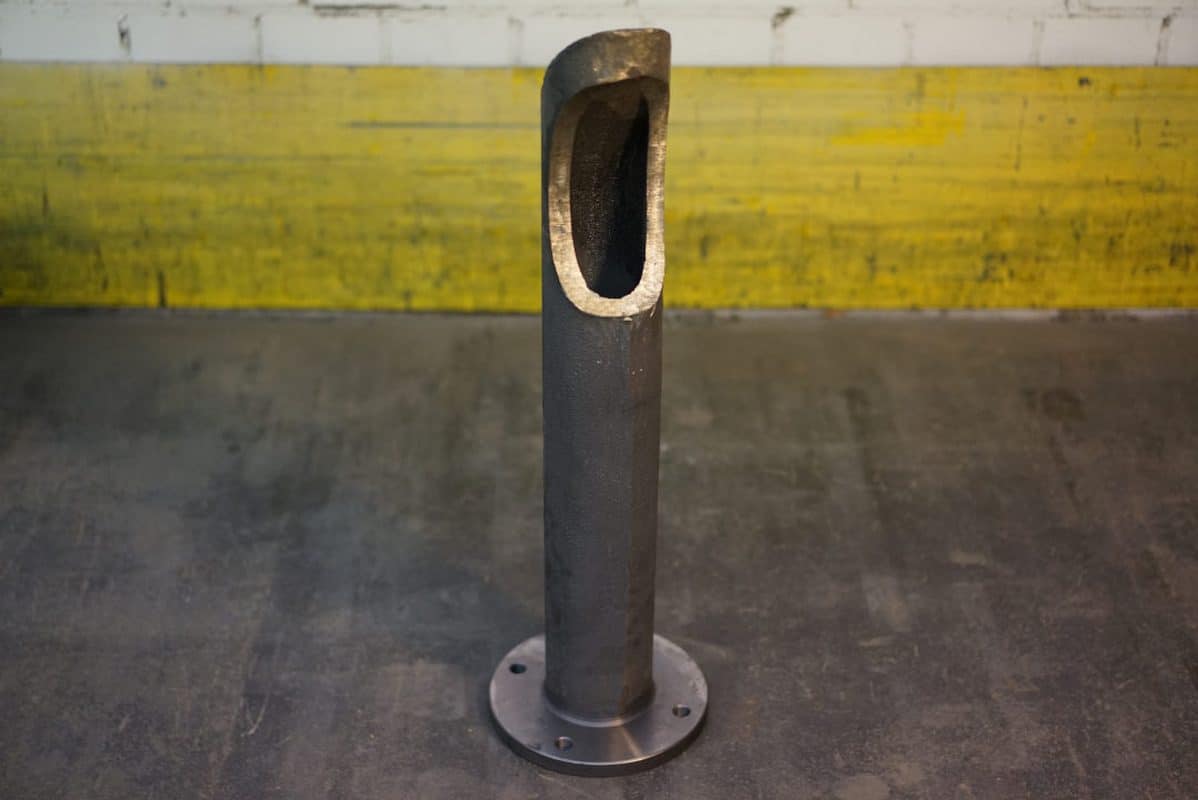
In most cases, it is still necessary to machine the die-casting articles. However, the investment is kept within limits because the parts already have a good dimensional accuracy.
The die-casting process can be divided into different sub-types. These types distinguish in the process of the mold filling.
The most common processes are as follows:
- Gravity die-casting
- Low pressure gravity die-casting
- Tilting gravity die-casting
- Counter pressure die-casting
Gravity die-casting is the most popular of these processes. The casting material flows into the mold by gravity, usually by rising casting. This means that the meld flows into the mold from below and the casting material slowly fills the cavity as it rises.
The advantage of the slowly moving melt is that the development of oxide and foam is minimized and therefore also the development of blowholes and shrink holes.
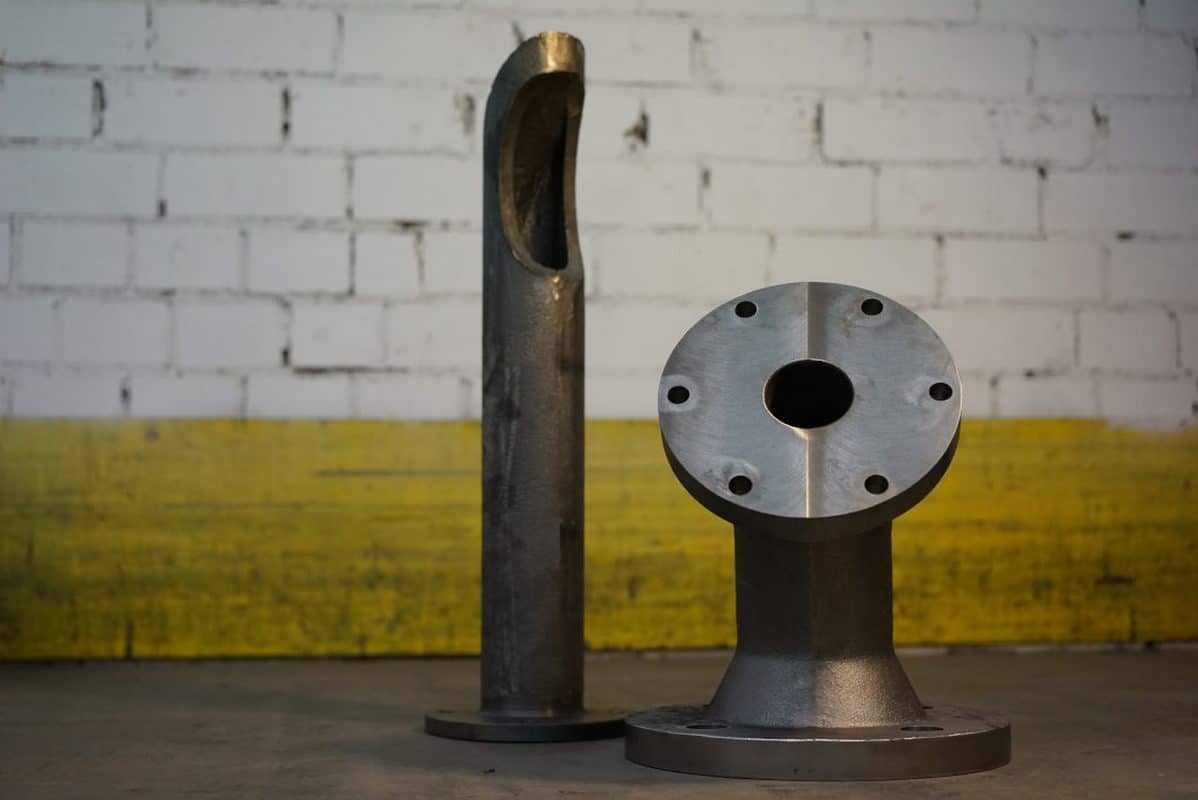
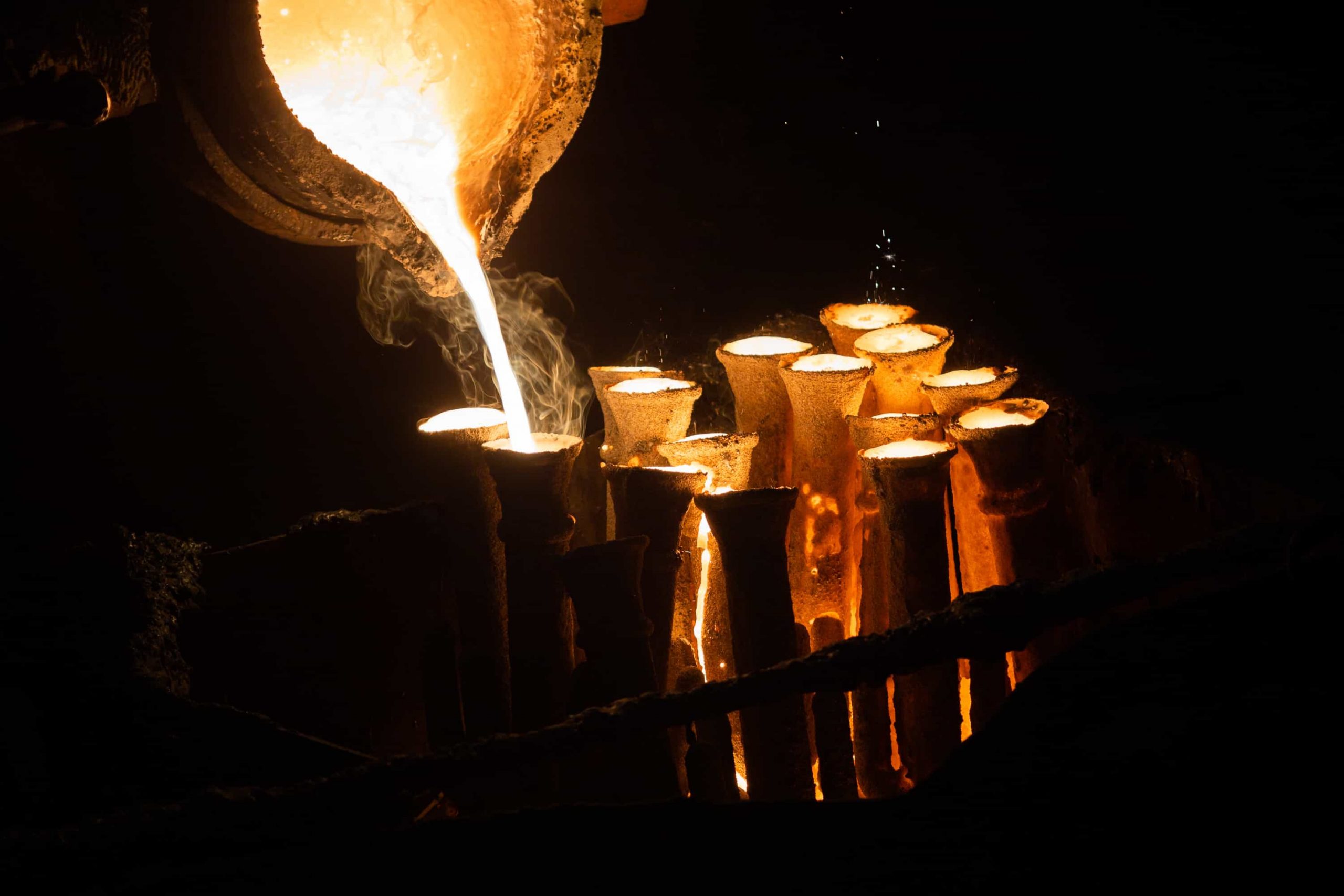
As a result, the casting material only flows into the cavity at a low drop height and moderate speed, once again reducing the risk of blowholes and shrink holes.
As the mold filling processes, the mold is straightened / tilted to its normal position, until the mold is completely filled.
This process is mainly used for aluminum die-casting and aluminous copper alloys, especially brass.
At the low-pressure die-casting process the mold is filled by means of a slight overpressure. The melt flows from a crucible furnace, which is pressurized to a low pressure of approximately 0.3 to 0.7 bar, via a riser pipe into the cavity.
The cavity / mold is positioned above the furnace. The mold is filling smoothly, with low turbulences. This reduces the risk of blowholes and shrink holes within the casting part.
This type of process is often used for the production of aluminum wheels.
The difference to the low-pressure die-casting is that not only the furnace is pressurized, but also the die. Both reservoirs, furnace and die, are pressurized to around 4 – 5 bar.
The pressure applied to the furnace is somewhat higher, so that the melt flows through the sprue into the die. The pressure is maintained until the casting solidifies.
The advantage of this process, in comparison to low pressure die-casting, is that the feeding pressure is higher. This makes it possible to produce a microstructure with smaller pores and therefore better mechanical properties.


The centrifugal die-casting process is applicable for rotationally symmetrical parts. Especially for the manufacturing of thick-walled aluminum bushings and tubes this process is suitable.
The melted material is poured into a rotating, tube-formed die. By the centrifugal force the melt is pressed against the inner wall of the cavity, where it solidifies. This creates a very dense, low-porosity structure.




